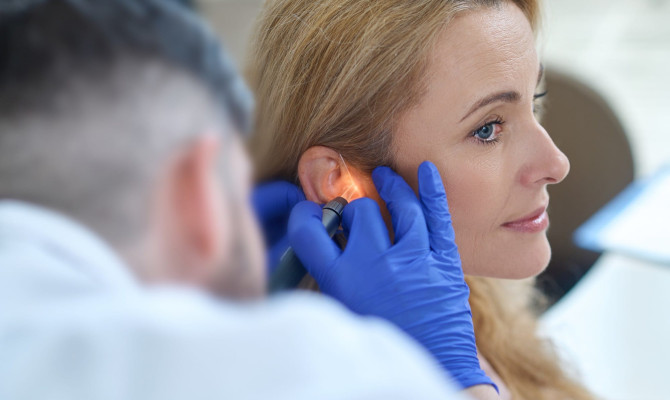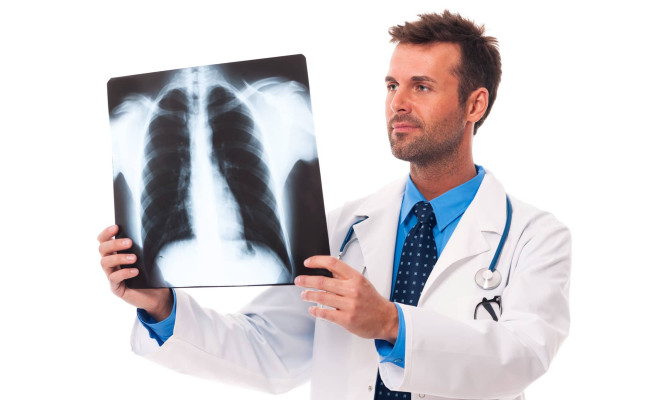Liver Cancer: Types, Symptoms, and Treatment

- Liver Cancer
- 17 Aug 2023
Overview
What is Liver Cancer?
Liver cancer (hepatic cancer) is the abnormal cell growth in the liver. Liver cancer destroys the liver cells and interferes with the normal liver functioning.
The liver is the largest internal organ of our body, located in the upper right of the abdomen. It performs several vital bodily functions, such as absorbing nutrients, storing glucose, eliminating waste products, and healing wounds. It also produces bile which helps digest vitamins, fats, and other nutrients.
Liver cancer begins in the liver, but the abnormal cells can travel through the bloodstream to other body organs and grow there. Liver cancer is a severe illness, and the cases are increasing globally. Early diagnosis increases longevity in patients with liver cancer

Prevalence
- Liver cancer is more common in men than women
- Liver cancer is the sixth most recurring cancer and the fourth major cause of mortality from cancer.
- It is widespread in the age group ranging from 55 to 65 years.
- Liver cancer is half of all cancers in underdeveloped countries
- Globally, China accounts for 50% of liver cancer cases and 80% occur in East Asia and sub-Saharan Africa.
- In the United States, around 25000 men and 11000 women get liver cancer yearly 1Overview| Researched based study from Sciencedirect.com , 2Overview| Researched based study from Cdc.gov .
Types
Types of Liver Cancer
Liver cancer can be of two types:
- Primary Cancer
- Secondary Cancer
Primary liver cancer
Primary liver cancer is a tumor that starts in the liver
There are several types of primary liver cancer. Some of the main types are listed below:
Hepatocellular carcinoma (Hepatoma)
- Hepatocellular carcinoma occurs when the tumor develops in the hepatocytes (liver cells). It is the most common type and occurs more often in people with chronic hepatitis and cirrhosis.
- Chronic Hepatitis is the long time pain and swelling of the liver
- Cirrhosis is an end-stage liver disease in which the liver gets permanently damaged due to hepatitis B or C infection, nonalcoholic fatty liver disease, or heavy alcohol use.
Cholangiocarcinoma (bile duct cancer)
- Cholangiocarcinoma occurs in the ducts or the tubes that carry the digestive fluid, bile, to the gall bladder. It is a rare type of cancer.
Cholangiocarcinoma is of two types:
- Intrahepatic bile duct cancer-Here, cancer occurs in the portion of the duct inside the liver
- Extrahepatic bile duct cancer-Cancer starts in the part of the duct outside the liver
Hepatoblastoma
- It is a rare tumor that starts in the liver. It is more frequent in babies and toddlers under the age of three.
Liver angiosarcoma
- It is a unusual tumor that starts in the liver’s blood vessels. The cancer progresses very rapidly and so often diagnosed at a later stage 3Types| Researched based study from Nlm.nih.gov
Secondary liver cancer
- Secondary liver cancer starts in other body parts and then spreads to the liver.
However, health professionals only illustrate cancer starting in the liver as liver cancer.
Symptoms
Symptoms of Liver Cancer
Most people do not experience symptoms at the early stages of liver cancer.
However, when symptoms appear in later stages, they might include the following:
- Upper abdominal pain
- Nausea and vomiting
- Jaundice (yellowing of the skin and eyes)
- Pale stools and dark urine
- Extreme tiredness
- Weakness
- Fever
- Loss of appetite
- Unexplained weight loss
- Bleeding easily
- Enlarged liver, spleen or both
- Feel full after a small meal
- Fluid buildup in the abdomen
- Back pain
- Pain close to the right shoulder
- Itching
Early warning signs of liver cancer
- Loss of appetite
- Losing weight at a fast pace
- Upper abdominal pain
- Nausea and vomiting
- Abdominal swelling
- Extreme weakness and tiredness
- Jaundice
- Pale or chalky white stool 4Symptoms| Researched based study from Nlm.nih.gov
Causes
Causes of Liver Cancer
Causes of Liver cancer can be :
Mutation
- The cause of liver cancer is the mutation in the liver cell DNA (deoxyribonucleic acid).DNA is the substance that gives instructions for various bodily processes.
- The DNA mutation causes the cell to grow uncontrollably and form tumors.
An infection
- Sometimes the exact cause of liver cancer is known, such as cirrhosis and hepatitis B and C infections.
But at times, people develop liver cancer without any cause, and to date, it is unclear what causes it 5Causes| Researched based study from Nlm.nih.gov
Stages
Stages of Liver Cancer
To guide the treatment process, doctors divide liver cancer into four stages:
Stage 1 (very early stage)
- The tumor remains in the liver and does not spread to other organs
Stage 2 (early stage)
- Several small tumors remain in the liver, and one travels to the blood vessel.
Stage 3 (Intermediate stage)
- Various large tumors or single tumor has reached the large main blood vessel.
Stage 4 (advanced stage)
- The tumors have proliferated to other body parts, such as the lungs and bones 6Stages| Researched based study from Nlm.nih.gov .
The doctors diagnose and identify the stage before giving the treatment
Diagnosis
Diagnosis of Liver Cancer
The doctor conducts a thorough physical examination followed by the person’s medical and family history to rule out any possible risk factors.
Then the doctor might request the following tests:
Blood tests
- To analyze levels of red blood cell, white blood cell, and platelet count
Viral hepatitis test
- To check for hepatitis B and C infection
MRI (magnetic resonance imaging)
- It is an imaging technique to identify the location and the stage of liver cancer.
CT (Computed tomography)- scan
- It is an imaging technique to get detailed information about the cancer’s size, shape, and position.
Biopsy
- The surgeon removes a small tumor tissue with a thin needle from the liver to determine if it has cancerous cells.
Laparoscopy
- It is a surgical procedure in which the surgeon puts a thin tube with a camera through the cut in the abdominal area to see the liver and the surrounding tissue 7Diagnosis| Researched based study from Nlm.nih.gov
Once the doctor analyzes the location, stage, and type of cancer, he will decide on an effective treatment plan.
Risk Factors
Risk factors of Liver Cancer
- Heavy alcohol use
- Family history of liver cancer
- Long exposure to aflatoxin (a toxin produced by fungus growing on crops)
- Anabolic steroid use (artificial male hormone to increase muscles )
- Smoking
Who are at risk of getting Liver Cancer?
- People with type 2 diabetes (high sugar)
- With increased weight
- One with hepatitis
- With cirrhosis
- People with nonalcoholic fatty liver disease(accumulation of fat in the liver)
- One with HIV(human immunodeficiency virus) infection
- With glycogen storage diseases
- People with Tyrosinemia (a disorder in which the body cannot breakdown the amino acid tyrosine)
- People with Wilson’s disease(a disorder in which excess copper builds up in the body)
- One with inherited metabolic disease 8Risk factors| Researched based study from Nlm.nih.gov
Complications
Complications of Liver Cancer
Some of the probable complications of liver cancer are as follows:
- Anemia( low red blood cell count)
- Bleeding from nose and teeth
- Esophageal bleeding
- Hypercalcemia (High blood calcium)
- Bile duct obstruction
- Hepatic encephalopathy(a disorder caused by toxin buildup in the brain)
- Hepatorenal syndrome (a disease with progressive kidney failure) 9Complications| Researched based study from Nlm.nih.gov
Treatment
Treatment of Liver Cancer
Surgery for entirely removing tumors is the only option for treatable early-stage liver cancer
Surgical options are:
Partial hepatectomy
- It is a surgical procedure to remove part of the liver that is cancerous
- People with healthy liver functioning are suitable for partial hepatectomy
- If cancer has invaded other parts of the body, then partial hepatectomy is not a feasible option
Liver transplant
- A liver transplant is a surgery to remove the diseased liver from the donor’s healthy liver.
- For a liver transplant, the tumor size must be less than 5 cm (centimeter) or multiple tumors less than 3 cm.
- A successful liver transplant decreases the risk of cancer returning and restores correct liver functioning.
Treatment options for advanced liver cancer
- Liver cancer proliferating to other body parts has a low survival rate. However, the cancer team can take steps to slow the tumor growth and reduce the symptoms.
- The treatment varies depending on the type of liver cancer
Some other treatment options are listed below:
Ablative therapy
- It is the therapy that uses electromagnetic waves, radio waves, heat, or cold to destroy the tumor tissue without the need for more invasive procedures.
Chemotherapy
- It is a treatment that utilizes powerful chemicals to destroy the tumor tissue.
- Chemoembolization is when the doctor administers anticancer drugs in a blood vessel near the tumor to block the tumor’s blood supply.
Radiation therapy
- It uses high doses of radiation to destroy the cancer tissue and shrink tumors.
Immunotherapy
- The treatment uses the person’s immune system to find and damage cancer cells.
Targeted therapy
- It is a treatment that uses medicines to target specific proteins that helps cancer cells grow and divide.
Besides the treatment mentioned above, the doctor might ask patients to take part in clinical trials for treatments that have not entered formal use to ease the symptoms. Alternatively, the patients might ask the doctor for any ongoing clinical trials that suit them 10Treatment| Researched based study from Nlm.nih.gov
Prevention
Prevention of Liver Cancer
Liver cancer can’t be prevented completely. Some of the tips that might reduce the risk of liver cancer are as follows:
- Exercising regularly
- Eating a healthy balanced diet
- Limiting alcohol intake
- Limiting tobacco use
- Getting vaccinated with Hepatitis B
- Adopting measures to prevent hepatitis C, such as using condoms, getting piercing tattoos from reliable shops, and avoiding sharing needles 11Prevention| Researched based study from Nlm.nih.gov
Steps to reduce recurrent liver cancer in Treated Peoples
- Protecting oneself from Hepatitis B and C infections
- Complete cessation of smoking
- Complete cessation of alcohol
- Eating healthy diet
- Getting some exercise every day
- Getting enough rest
- Contacting and getting help from support groups that understand the problem
Outlook
The Outlook
- Although healthcare providers are making progress in liver cancer treatment, it remains a fatal disease.
- A successful liver transplant can cure liver cancer, but it is not possible for everyone to go through a transplant or find a donor.
- Studies have shown that people with surgery to remove part of the liver live longer than people who cannot undertake surgery for a health condition. For those people, doctors often offer treatment plans that help them live a better quality of life as long as possible 12Outlook| Researched based study from Nlm.nih.gov .
Any feedback on this article?
 This Articles content was accurate
This Articles content was accurate Very Informative Article
Very Informative Article I have a question or a comment
I have a question or a comment
 This article contains inaccurate content
This article contains inaccurate content This article was not helpful
This article was not helpful I have a question or a comment
I have a question or a comment
We appreciate your helpful feedback!
Checkout our social pages
References
-
Science Direct
Liver Cancer - an overview | Overview
-
Centers for Disease Control and Prevention
Liver Cancer | Overview
-
National Library of Medicine
Liver Cancer | Types
-
National Library of Medicine
Hepatocellular carcinoma: a review | Symptoms
-
National Library of Medicine
Hepatocellular Carcinoma: Causes, Mechanism of Progression and Biomarkers | Causes
-
National Library of Medicine
Staging systems in hepatocellular carcinoma | Stages
-
National Library of Medicine
Diagnosis and treatment of hepatocellular carcinoma: An update | Diagnosis
-
National Library of Medicine
Risk factors for developing liver cancer in people with and without liver disease | Risk factors
-
National Library of Medicine
Complications after Thermal Ablation of Hepatocellular Carcinoma and Liver Metastases: Imaging Findings | Complications
-
National Library of Medicine
Adult Primary Liver Cancer Treatment (PDQ®) | Treatment
-
National Library of Medicine
PROMISING Practices for the Prevention of Liver Cancer: a review of the literature and cancer plan activities in the National Comprehensive Cancer Control Program | Prevention
-
National Library of Medicine
Actual over 10-year survival after liver resection for patients with intrahepatic cholangiocarcinoma | Outlook





































